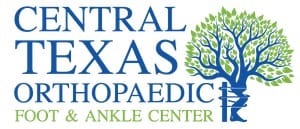Common Diagnoses:
Foot Drop
Foot Drop Overview
Foot drop, sometimes called drop foot, is a general term for difficulty lifting the front part of the foot. If you have foot drop, the front of your foot might drag on the ground when you walk.
Foot drop isn’t a disease. Rather, foot drop is a sign of an underlying neurological, muscular or anatomical problem.
Sometimes foot drop is temporary, but it can be permanent. If you have foot drop, you might need to wear a brace on your ankle and foot to hold your foot in a normal position.
Foot Drop Symptoms
Foot drop makes it difficult to lift the front part of your foot, so it might drag on the floor when you walk. This can cause you to raise your thigh when you walk, as though climbing stairs (steppage gait), to help your foot clear the floor. This unusual gait might cause you to slap your foot down onto the floor with each step. In some cases, the skin on the top of your foot and toes feels numb.
Foot Drop Diagnosis
Foot drop is usually diagnosed during a physical exam. Your doctor will watch you walk and check your leg muscles for weakness. He or she may also check for numbness on your shin and on the top of your foot and toes.
Imaging tests
Foot drop is sometimes caused by an overgrowth of bone in the spinal canal or by a tumor or cyst pressing on the nerve in the knee or spine. Imaging tests can help pinpoint these types of problems.
X-rays. Plain X-rays use a low level of radiation to visualize a soft tissue mass
CT scan. This combines X-ray images taken from many different angles to form cross-sectional views of structures within the body.
Magnetic resonance imaging (MRI). This test uses radio waves and a strong magnetic field to create detailed images. MRI is particularly useful in visualizing soft tissue lesions that may be compressing a nerve.
Foot Drop Treatment
Treatment for foot drop depends on the cause. If the cause is successfully treated, foot drop might improve or even disappear. If the cause can’t be treated, foot drop can be permanent.
Treatment for foot drop might include:
Braces or splints. A brace on your ankle and foot or splint that fits into your shoe can help hold your foot in a normal position.
Physical therapy. Exercises that strengthen your leg muscles and help you maintain the range of motion in your knee and ankle might improve gait problems associated with foot drop. Stretching exercises are particularly important to prevent the stiffness in the heel.
Nerve stimulation. Sometimes stimulating the nerve that lifts the foot improves foot drop.
Surgery. Depending upon the cause, and if your foot drop is relatively new, nerve surgery might be helpful. If foot drop is long-standing, your doctor might suggest surgery that fuses ankle or foot bones or a procedure that transfers a working tendon and attached muscle to a different part of the foot.

